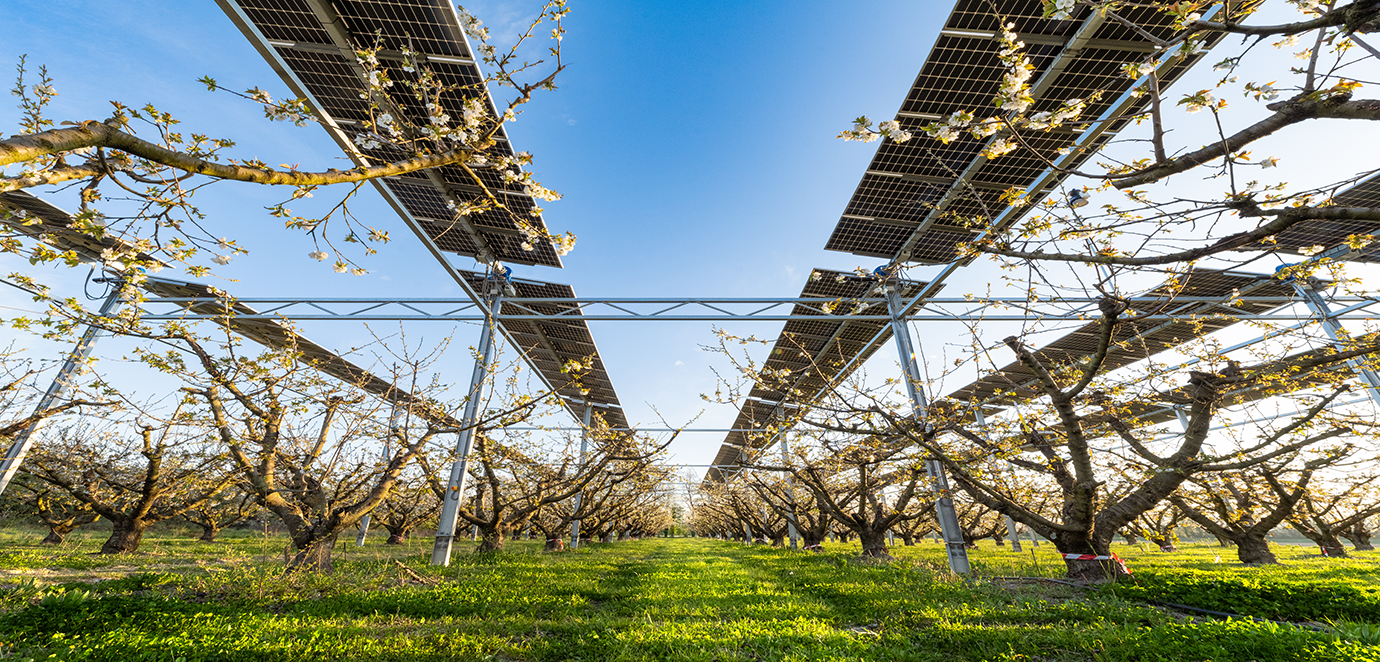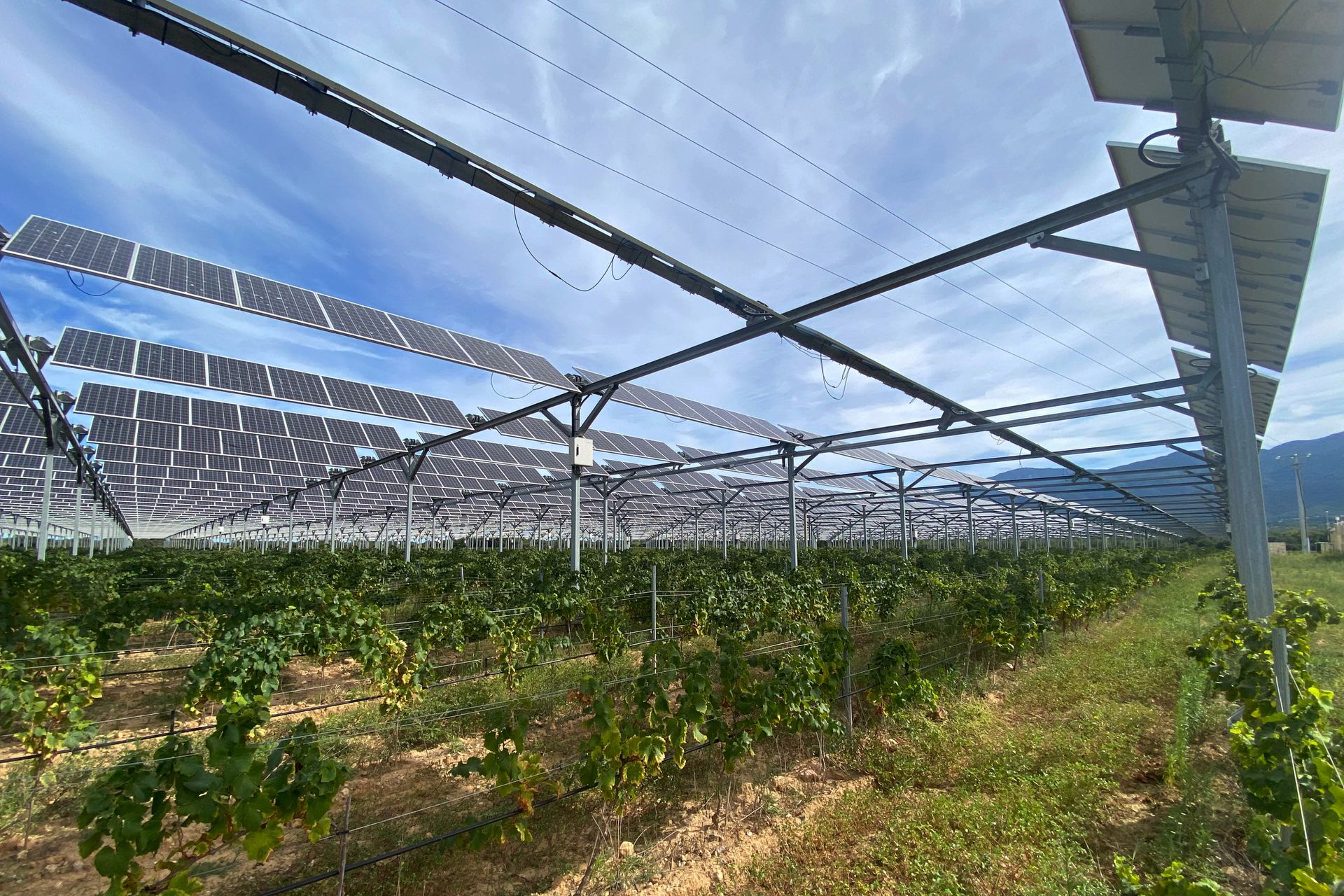Sun’Agri helps you to protect your farm from the effects of climate change.
Dynamic agrivoltaics is an agricultural tool for crop protection developed by Sun’Agri. It involves constructing a system of solar louvres on top of the crops, which represents a real agronomic breakthrough that protects yields by combating water, heat and solar radiation stress.
Find more about our solution
Dynamic agrivoltaics is an effective tool for protecting crops that also produces green electricity.
The agricultural sector faces many challenges in terms of its development and evolution: changing societal expectations, low margins, climate change and natural disasters, recruitment difficulties, generational changes, etc.
Our solution makes it possible to meet these challenges by:
- Protecting yields
- Reducing the need for irrigation
- Protecting crops against burns
- Protecting crops against frost
- Improving the working conditions under the panels
- Putting in place a metal structure that can be shared with trellises and nets
You have a project
Sun’Agri in figures
0+
farmers trust us
0
partners
0
employees
0+
agronomists
0
researchers
0



